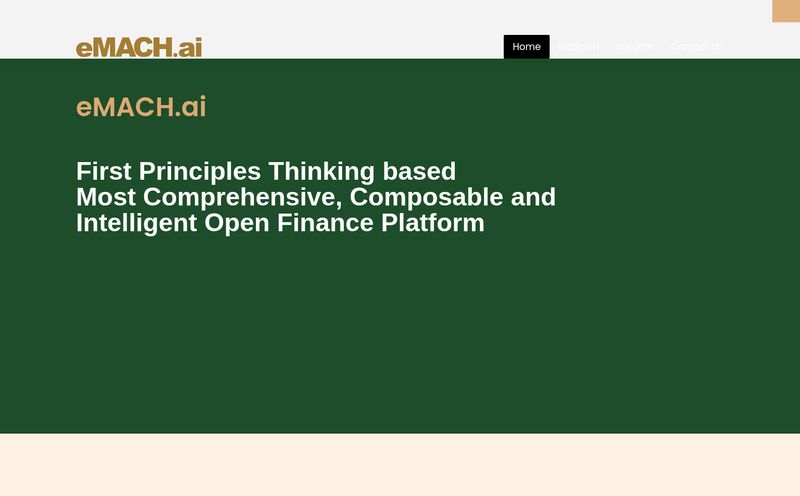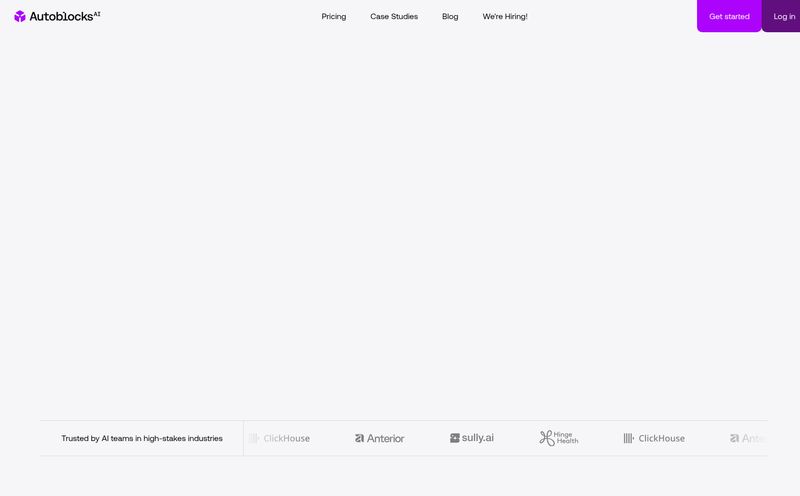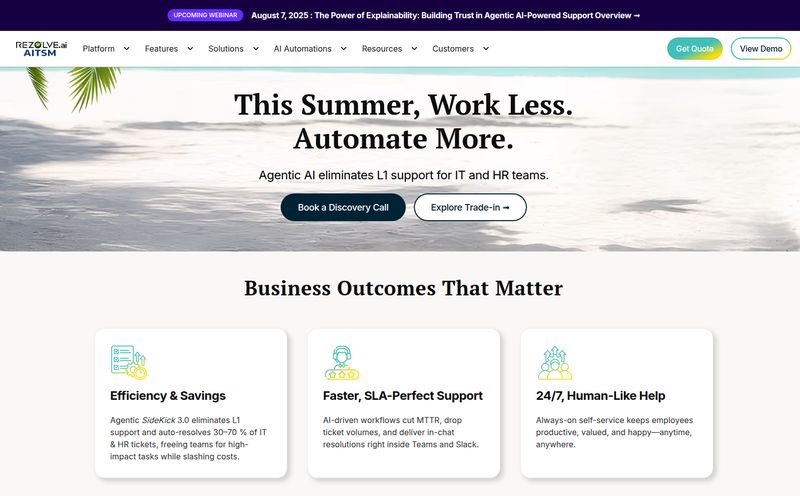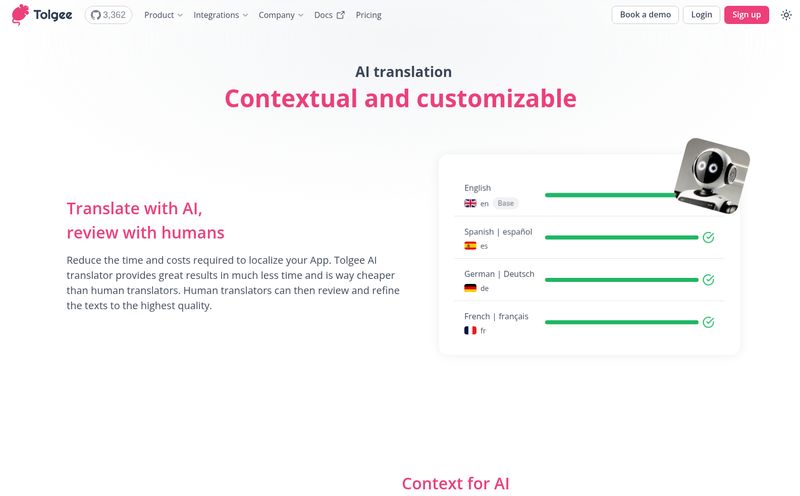If you've been in the digital marketing or dev space for more than a week, you've probably felt it. That nagging feeling that you’re spending half your day acting as human glue for a dozen different apps that refuse to talk to each other. You’re manually exporting CSVs, copy-pasting data into Slack, and praying you don't miss a crucial lead because it got stuck somewhere in the digital plumbing.
I've been there. We've all been there. We’ve tried the big-name automation tools. And they're great! For a while. But then you hit a wall. You need to do something just a little bit custom, a little bit weird, and the user-friendly, no-code interface suddenly feels like a padded cell. You can see the solution, but you just can't get there.
That's the exact moment I stumbled upon Pipedream. And I’ve gotta say, it feels like it was built by people who have felt that exact same frustration.
So, What on Earth is Pipedream?
On the surface, Pipedream looks like another low-code integration platform. You know the drill: connect App A to App B, set up a trigger, and an action happens. But that’s like saying a professional kitchen is just a place with a stove. The magic is in the details. Pipedream is what happens when you give those automation tools a shot of espresso and a computer science degree.
It's an integration platform designed for developers, or at least for people who aren't afraid to peek under the hood. It gives you the convenience of pre-built components and thousands of integrations, but—and this is the killer feature—it lets you drop down into raw code whenever you want. It’s the perfect middle ground between the simple-but-restrictive world of no-code and the powerful-but-painful world of building everything from scratch.
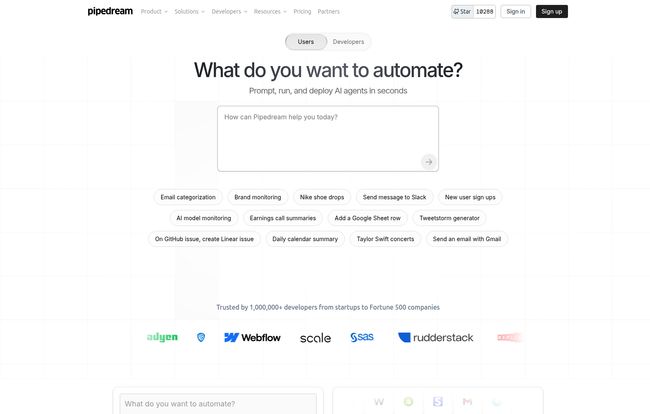
Visit Pipedream
The Pipedream Features That Actually Matter
You can read a feature list anywhere. Let's talk about what makes this platform genuinely different in practice.
A Playground for Coders and Low-Coders
This is the core of Pipedream's genius. You can build an entire workflow by just clicking and connecting pre-built blocks. Want to get a notification in Discord every time someone fills out a Typeform? Easy. You can probably set that up in two minutes without writing a single line of code. But what if you need to transform that Typeform data first? Maybe run a calculation, reformat a date, or call a third-party API to enrich the user's email address? With most tools, you're out of luck. With Pipedream, you just add a code step. You can write your logic in Node.js, Python, Go, or even Bash. This flexibility is, frankly, a game-changer. It turns a rigid process into a creative one.
A Truly Massive Library of Integrations
I've seen platforms boast about their integrations, but Pipedream is on another level. We're talking about over 2,700 integrated apps and more than 18,000 components. It’s not just the big names like Google Sheets, Slack, and Salesforce. It's the niche tools, the developer APIs, the databases… the stuff that actually powers modern tech stacks. And if they somehow don't have what you need, their `One SDK` and generic HTTP request blocks mean you can connect to literally any API on the planet. The question is never "Can Pipedream connect to it?" but rather "How do I want to connect to it?"
Building with AI is a First-Class Citizen
With the AI explosion, everyone is scrambling to bolt on some sort of AI functionality. With Pipedream, it feels native. Their AI Agent Builder lets you prompt, run, and deploy AI agents in seconds. You can build things like an earnings call summarizer, an automated email categorizer, or a content generator that pipes its output directly into your CMS. Because you can mix AI steps with code steps and app integrations, the possibilities get a little wild. Think: automatically analyzing sentiment from customer feedback in Intercom, sending negative reviews to a dedicated Slack channel, and then using AI to draft a personalized response for your support team. That’s not a futuristic dream; its a weekend project in Pipedream.
My Honest Take: The Good, The Bad, and The Complicated
No tool is perfect, right? After spending a good amount of time building workflows, here's my unfiltered opinion. The biggest advantage is, without a doubt, the flexibility. It's like the difference between a coloring book and a blank canvas with a huge box of crayons. You have the structure if you need it, but you can go completely off the rails if you want. The fact that deployment and server management are handled for you is just icing on the cake. No more worrying about setting up a server just to run a simple cron job. Thank goodness.
On the flip side, that same flexibility can be a double-edged sword. If you're building a truly massive, enterprise-level workflow with dozens of complex, branching steps, things can get a bit tangled. It requires a bit of discipline to keep your workflows clean and maintainable. And, of course, some of the really powerful features, like control flow operators (if/else, loops, etc.) and unlimited workflows, are reserved for the paid plans. That’s fair, but something to be aware of.
Let's Talk Money: Pipedream Pricing Explained
Pricing can often be a murky mess of confusing tiers and hidden fees. Pipedream's is pretty straightforward, and it’s based on a credit system, which is common for this kind of service.
First off, there's a genuinely useful Free tier. You get up to 300 credits per month (with a cap of 10 per day), which is more than enough to kick the tires, build a few personal automations, or handle low-volume tasks. It's perfect for getting started without pulling out your credit card.
The Basic plan, at $29 per month, is where things get serious for small projects or solo developers. It gives you 2,000 credits per month and bumps up your active workflow and connected account limits. It's a solid step up for when your automations start becoming critical to your business.
Next is the Advanced plan for $49 per month. It includes the same 2,000 credits but unlocks the good stuff: unlimited workflows, unlimited connected accounts, and those crucial control flow operators I mentioned earlier. For any complex automation, this is likely the tier you'll want to be on.
For businesses looking to integrate Pipedream into their own products, there's the Connect plan at $99 per month, which includes 10,000 credits and auth for external users. And of course, there's a custom Business plan for enterprise needs with all the bells and whistles like dedicated support, SLAs, and HIPAA compliance.
Who Is Pipedream Really For?
So, who should drop what they're doing and try this thing? In my experience, Pipedream hits the sweet spot for a few key groups:
- Developers: This is a no-brainer. If you're a developer who needs to quickly automate tasks or build integrations, Pipedream is your new best friend. It saves you an insane amount of time.
- Technical Marketers & Ops Pros: If you're the person on the team who understands what an API is and isn't afraid to get your hands a little dirty, you will love this. You'll be able to build workflows your competitors can only dream of.
- Startups: For small, agile teams, Pipedream is a force multiplier. You can automate so much of your operations, from lead management to customer support, without a huge engineering overhead.
Who might want to stick with something simpler? If the thought of seeing a line of code gives you hives and you only need to connect two very popular apps in a very basic way, a tool like Zapier might feel less intimidating. But if you have even a tiny bit of technical curiosity, I’d urge you to give Pipedream’s free tier a shot.
Frequently Asked Questions about Pipedream
- Is Pipedream better than Zapier?
- It's not about better, it's about fit. Zapier is fantastic for its simplicity and ease of use for non-technical users. Pipedream is more powerful and flexible, making it the preferred choice for developers or anyone who needs code-level control over their workflows.
- Is Pipedream actually free to use?
- Yes! The free plan offers 10 credits per day (300/month), 3 active workflows, and millions of AI tokens. It's incredibly generous and perfect for testing the platform or running small personal automations.
- What programming languages does Pipedream support?
- You can write custom code steps in Node.js, Python, Go, and Bash. This covers the vast majority of use cases for scripting and data manipulation.
- Do I absolutely need to be a developer to use Pipedream?
- Not at all. You can build many useful workflows using only the pre-built, no-code components. However, to unlock its full potential, a basic understanding of code or APIs is definitely helpful.
- Is Pipedream secure for sensitive data?
- Security is a clear priority. The platform is SOC 2 compliant, and the enterprise plan offers support for HIPAA workloads, making it suitable for handling sensitive information when configured correctly.
The Final Verdict: Should You Jump on the Pipedream?
After all this, my answer is a resounding yes—with a small caveat. If you're a developer or a technically-inclined person looking to automate the digital chaos of your life or business, stop what you’re doing and sign up. You'll wonder how you ever lived without it. The power to drop into code when you need it, without the hassle of managing servers, is just chef's kiss.
It's a tool that respects your intelligence and grows with you. It doesn’t hold your hand so tight that it cuts off circulation. It gives you the map, the compass, and a fully-stocked workshop, and trusts you to build something amazing. In a world of over-simplified tools, that’s incredibly refreshing.
